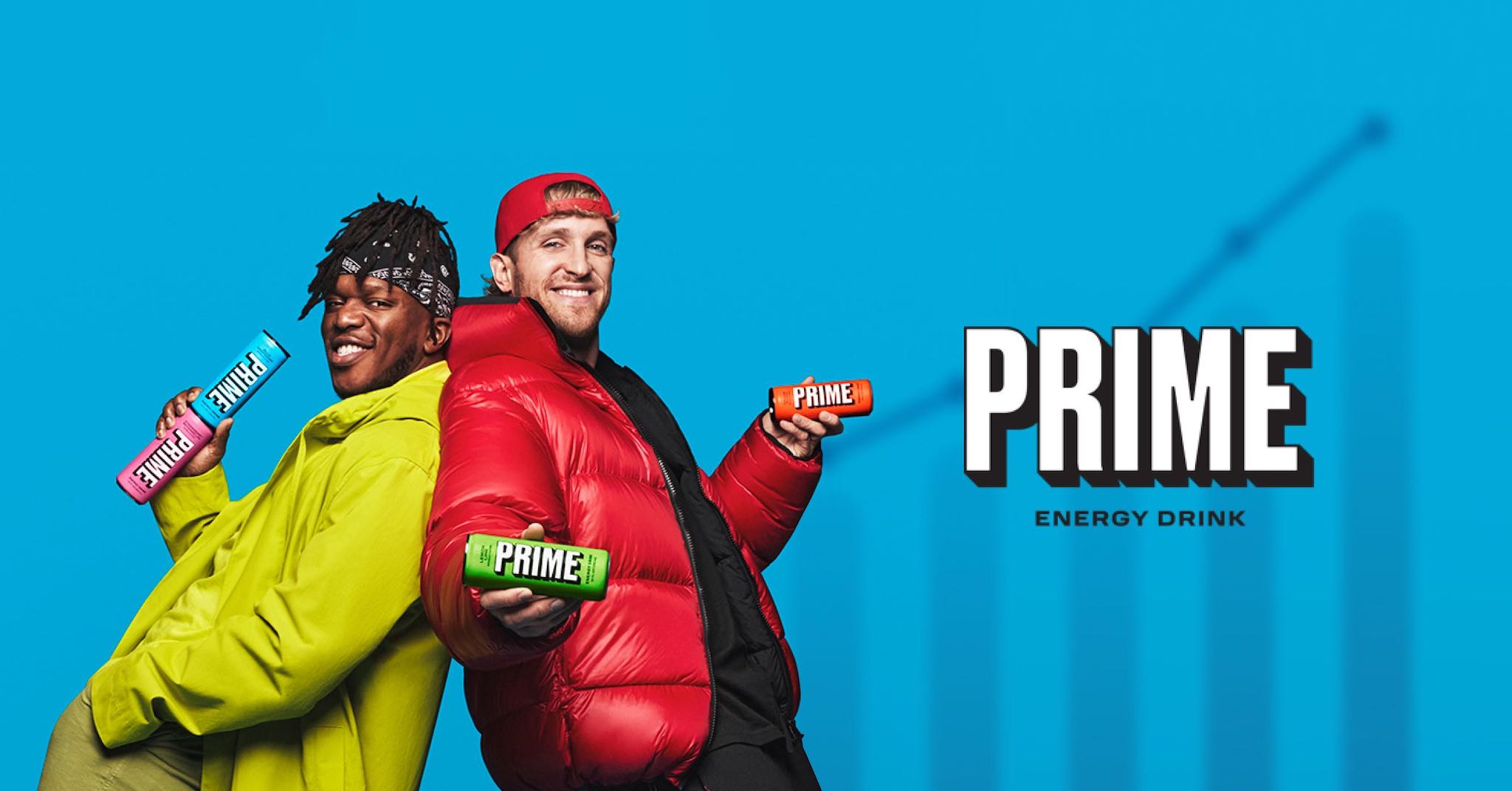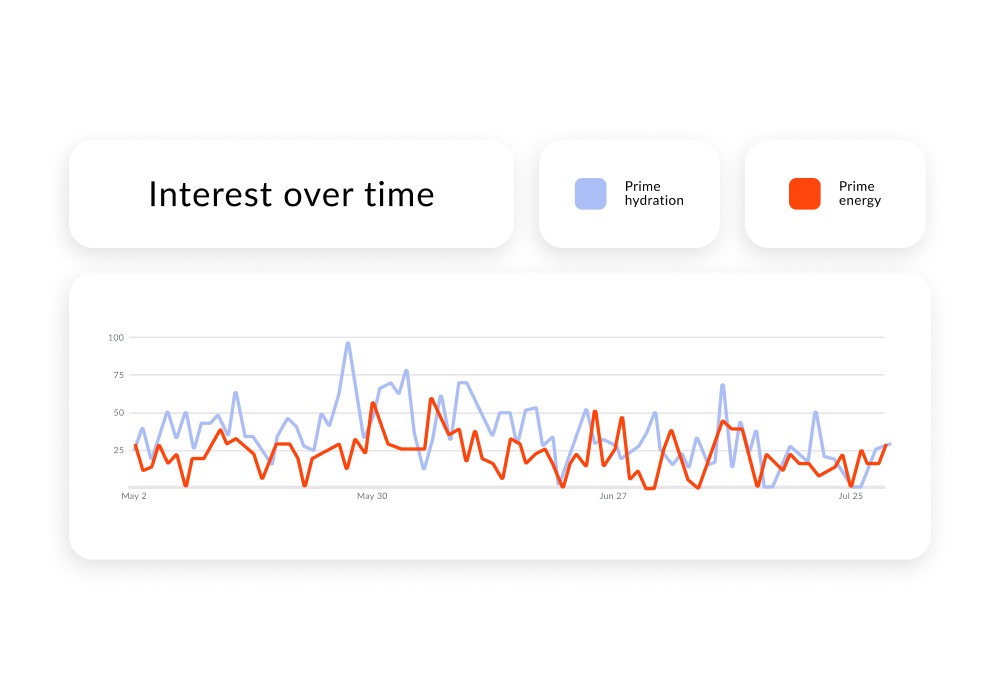
Let’s address the elephant in the room; this is not a commendation for Prime Energy or Prime Hydration. Nor is it a victory lap for its creators; influencers Logan Paul and KSI. And it is definitely not a validation for aggressively marketing unhealthy products to teenagers and children.
Prime is the latest in a long line of beverages that pushes the boundary for what is acceptable to produce from a health standpoint. But this isn’t a torches and pitchforks moment either. The ethics of Prime aside, their runaway commercial success provides retailers with an interesting case to study.
There are many elements to Prime’s success, and several lessons retailers can potentially apply to their own business.
So grab your caffeinated bevvie of choice and let’s jump in.
- A brief history of Prime in Australia
- Tactic 1: Engage target audiences in their native environments
- Tactic 2: Scarcity mentality will drive product equity
- Tactic 3: Build an authentic brand narrative that resonates
Prime Hydration and Prime Energy
Prime is proudly presented by full-time YouTubers and part-time boxers Logan Paul and KSI.
While the pair were formerly boxing rivals, they have put down their gloves to, as Prime’s website puts it, “Showcase what happens when rivals come together as brothers and business partners to fill the void where great taste meets function”.
Prime currently sells two beverages; Prime Hydration and Prime Energy. Prime Hydration is a coconut water-based electrolyte drink designed to compete with the likes of Gatorade. Prime Energy is a carbonated energy drink, sporting 200mL of caffeine per 355mL. That’s double the legal limit of caffeine in Australia per 100mL.
Currently, Prime Energy is not available from Australian retailers. However, young people are flooding third-party retailers in their quest to acquire the holy grail handed down by their influencer messiahs.
A quick look at Australian Google Trends reveals that broad search activity for Prime Hydration and Prime Energy peaked in March 2023, and has remained a popular search term for the following months.

Numbers represent search interest relative to the highest point on the chart for the given region and time. A value of 100 is the peak popularity for the term. A value of 50 means that the term is half as popular. A score of 0 means there was not enough data for this term.
3 promotional strategies retailers can learn from Prime Energy
With introductions out of the way, let’s dig deeper into what we can learn from Prime’s headline-stealing success.
1. Engage target audiences in their native environments
It’s no secret that intensely focused and well resourced marketing can be rocket fuel for any fledgling, or established, business.
Prime is firmly focused on teenagers, with Prime Hydration challenging Gatorade in the sports drink space. With this in mind, Prime didn’t waste their energy trying to win over the masses in a broad branding campaign. Both founders engaged tens of millions of their teenage followers on social media platforms like YouTube and TikTok to market Prime.
Digitally native Gen Z’s are more likely to buy from people they trust, like influencers they follow online and have parasocial relationships with. Research from Kantar has found that 44% of Generation Z have made a purchase decision based on a recommendation from a social influencer.
Research from McKinsey and Co on the new state of retail has also revealed that approximately 70% of Millennials and Gen Z’s rely on social media, celebrities, and articles or blogs for purchase inspiration. Furthermore, Gen Z’s are more likely to trust word of mouth or product recommendations from their peers.
Fanning the flames of fomo
Hundreds, if not thousands of teenagers have been sharing content online in their avid search for Prime – content that’s then consumed by others in their cohort, fanning the flames of fomo.
What results is an echo chamber where the influencer hypes their product, dedicated followers document their journey to acquire the coveted product on their own channels, which in turn highlights the product to other teens.
When their target audience are digitally native Gen Z’s, it’s clear Prime knew exactly what they were doing.
It pays to really understand how your target audience engages with digital media. It’s not good enough to set and forget some Meta ads, hoping that you can cut through the noise in the market.
If you’re serious about building brand equity with your target audience it’s imperative that you drill down on both marketing research and your existing customer databases.
Ask yourself these questions:
- How does my target audience consume content online?
- Are they receptive to traditional advertising or influencer content?
- Does my existing customer base post about my product online?
It’s the first step to confidently pursue the right customer segments and develop brand loyalty.
2. Scarcity mentality makes products more desirable
Some third-party wholesalers are selling a 12-pack slab of Prime Hydration for $2,000. That’s roughly $166 per bottle. Keep that in mind next time you’re charged $12 for a schooner.
There are two principles of supply and demand that’s relevant to the scenario Prime finds itself in:
- If supply decreases while demand remains constant, price increases.
- If supply is static while demand increases, price increases.
Prime has become a rare commodity, in some cases a collector’s item. So why does scarcity have such an overwhelming effect on customers? It’s a phenomenon that has been closely studied since the Second World War.
Published in 2013, the book Scarcity: Why Having Too Little Means So Much, presents decades of findings in the fields of psychology and economics that purports that “scarcity steals mental capacity wherever it occurs”. Published by Sendhil Mullainathan and Eldar Shafir, the research found that “If the mind is focused on one thing, other abilities and skills—attention, self-control, and long-term planning—often suffer.”
It’s like gaining access to an exclusive club
Given the scarcity of Prime, the psychological effect on their target market is one that keeps the elusive drink at the top of that audience’s priority list. It inspires an element of exclusivity and status that is appealing to consumers, like gaining access to an exclusive club.
Supply and demand is a beast that all retailers need to wrestle with. Whether it be product scarcity, logistic delays or cost of living affecting spending behaviours, supply and demand can be a precarious thing.
Store promotions and limited edition products are nothing new. However, the example of Prime is a stark reminder that when targeted correctly to a desired audience, scarcity can propel your product’s equity.
There are several sales promotions that retailers can employ; limited time discounts and including gifts with purchases are tried and true tactics to drum up buzz for your store.
3. Build an authentic brand narrative that resonates
A bad reputation is often seen as the iceberg destined to sink any business. However, notoriety is a powerful tool to grab headlines and gleam attention in a deafening and crowded digital media landscape.
While Prime may be notorious in the media, in the eyes of their target audience the brand elicits only positive responses.
Despite concerns raised around Prime Energy’s caffeine levels it still remains the most precious commodity for teenagers worldwide. Banning and condemning Prime may be increasing the appeal of the product.
Given their target demographic of teenage boys are more likely to gravitate to an anti-authoritarian brand, Prime’s bad reputation may make them more appealing.
Rebellious teenagers (and anyone with the mindset of one) may see Prime as an underdog, an outsider or a disruptor. As a brand, Prime has positioned themselves as a fresh alternative to the now decades old Gatorade.
But this cadence isn’t only achieved through thoughtful messaging. In Prime’s case, it relies on the shared infamy of its co-founders. Just like Elon Musk and Tesla, Prime is personified and synonymous with their infamous founders.
The sagas of Logan Paul and KSI are long. Love or hate them, each is a one-person stunt show. Their boxing feud turned flourishing business partnership is being leveraged into a “enemies to allies” narrative, something almost aspirational, as if two titans have laid down their arms to create a gift for the adoring masses.
Prime fits the description of a challenger brand; upstart mavericks who represent the ideals of an entire generation (at least, that’s the narrative they’re selling). Combined with careful market research, focused communications strategy and tapping into scarcity mentality, this brand narrative is something young people can easily latch onto.
Sculpting your brand narrative
So does that mean your business should adopt an outsider persona to increase your market share? It truly depends on who you want to attract to your business, and how you want your brand to be perceived in the public eye.
What’s more important is a tangible, consistent and relatable brand narrative. Brand narratives evoke emotional reactions in audiences. It becomes the through line for your business; not just for sales and marketing, but for product design as well.
Retail giants like Nike and Apple have built their empires on the back of long running brand narratives. While you may not have the resources of these two, in order to engage customers and nurture their loyalty, a good brand narrative is one of your most potent tools.
Prime Energy: A new leader in retail or short-term caffeine buzz?
Despite their polarising brand, you can’t deny that Prime has had incredible success to date. They have managed to cut-through the market by leveraging classic promotional tactics and applying them through the right digital channels.
While you don’t need to copy their strategy, it’s worthwhile to take the opportunity to reflect on your own marketing and promotional strategy. Are you engaging your desired audience, or is it time to shake things up?
Want more insights into how to find success in retail? Follow Lightspeed on Facebook, Instagram and LinkedIn for the latest industry deep dives.

News you care about. Tips you can use.
Everything your business needs to grow, delivered straight to your inbox.


